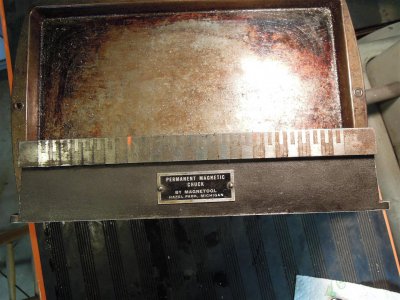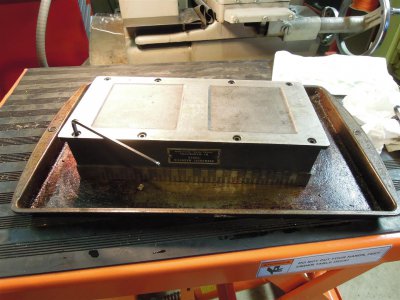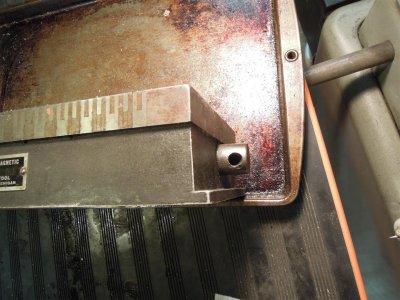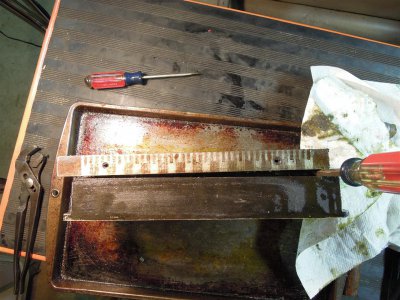Life is about to get in the way of my hobbies again, so if anyone responds it will be a few days until I can get around to thanking you. Until then, I leave you with a couple of questions on magnetic chucks - specifically the ones where you throw a lever (manual?) to operate, not electronically charged.
Question 1: How strong should these things be?
A. They should hold a metal object but you can pull it off with just about as much force as it takes to remove a playschool letter magnet from the fridge. (M is for Machinist).
B. So strong that if you bend over to get a close look it will pull the metal plate in your head out through your nose.
C. Somewhere in between A and B.
Question 2 depends on the answer to Question 1.
If you answered A above - no problem, nothing to see here, move along.
If you answered B above - what are the usual suspects to check when it stops working correctly? (Short of mailing it off to a professional for rebuild).
If you answered C above - could you provide a criteria that is measurable using items commonly found in a hobbyist workshop devoid of thousand dollar nuclear, ultrasonic, magnetic microwave measuring devices.
Thanks in advance.
Joe
Question 1: How strong should these things be?
A. They should hold a metal object but you can pull it off with just about as much force as it takes to remove a playschool letter magnet from the fridge. (M is for Machinist).
B. So strong that if you bend over to get a close look it will pull the metal plate in your head out through your nose.
C. Somewhere in between A and B.
Question 2 depends on the answer to Question 1.
If you answered A above - no problem, nothing to see here, move along.
If you answered B above - what are the usual suspects to check when it stops working correctly? (Short of mailing it off to a professional for rebuild).
If you answered C above - could you provide a criteria that is measurable using items commonly found in a hobbyist workshop devoid of thousand dollar nuclear, ultrasonic, magnetic microwave measuring devices.
Thanks in advance.
Joe





